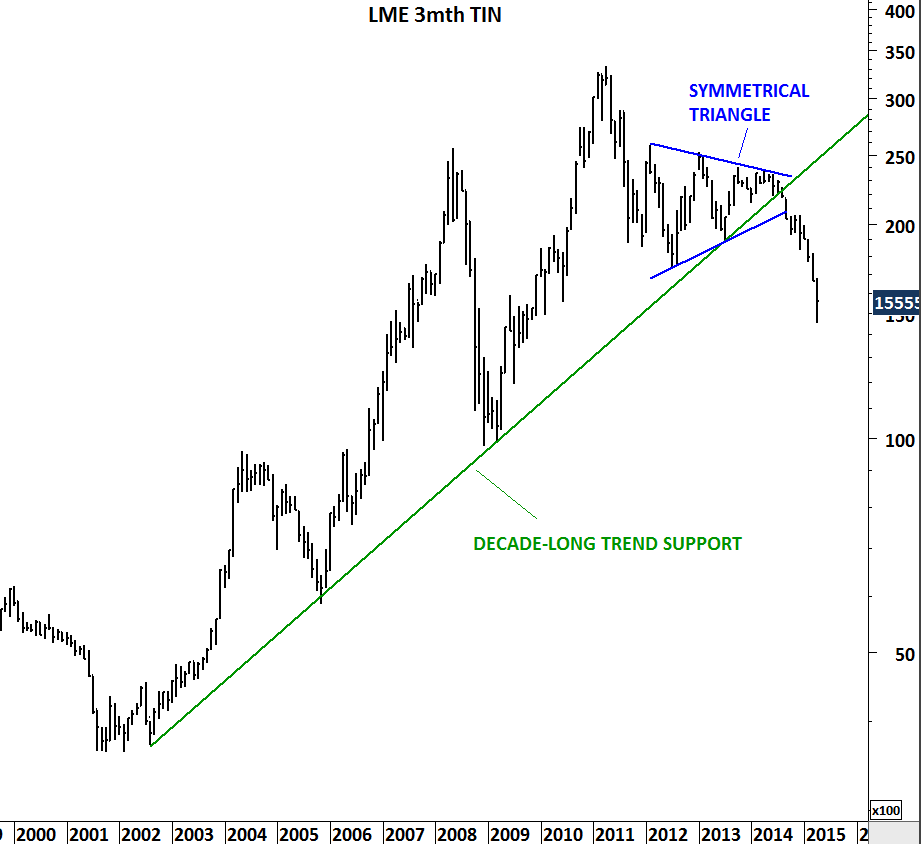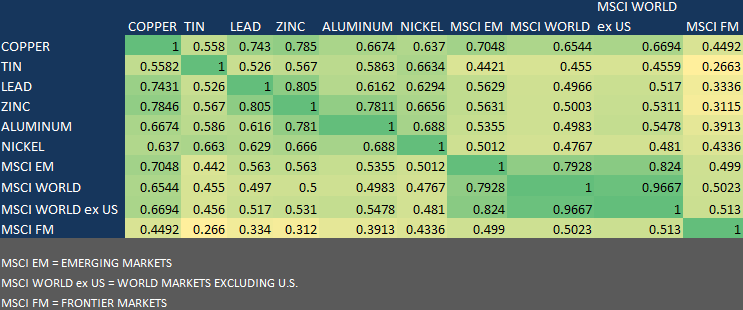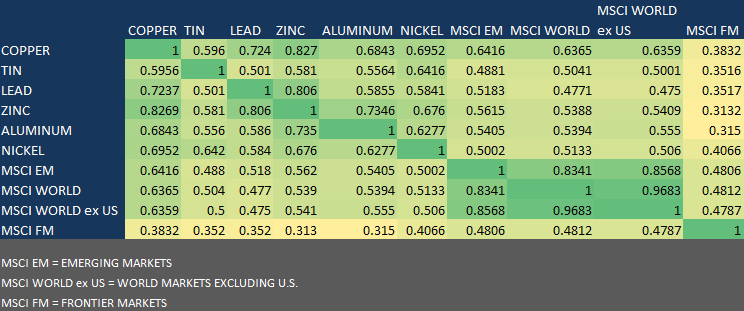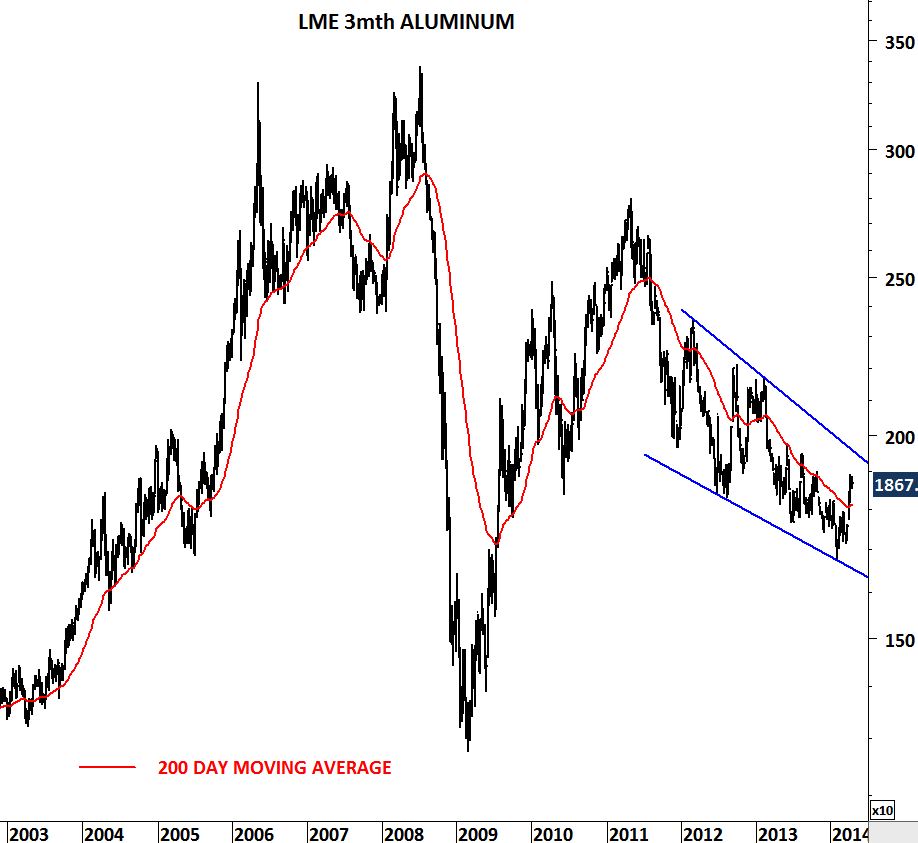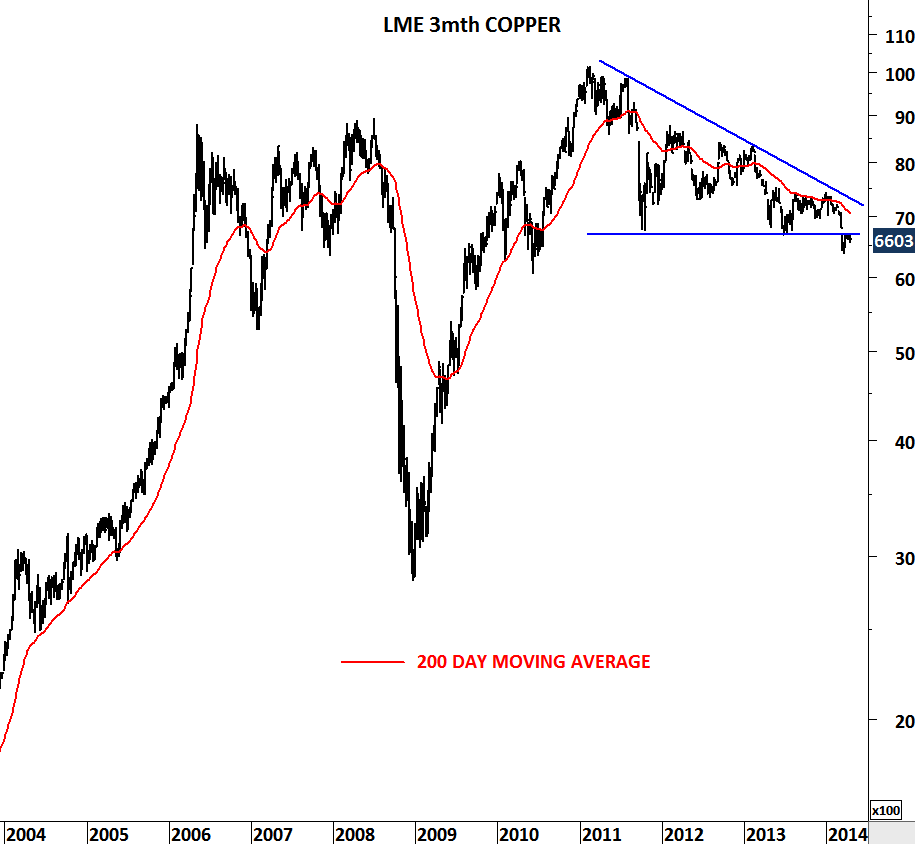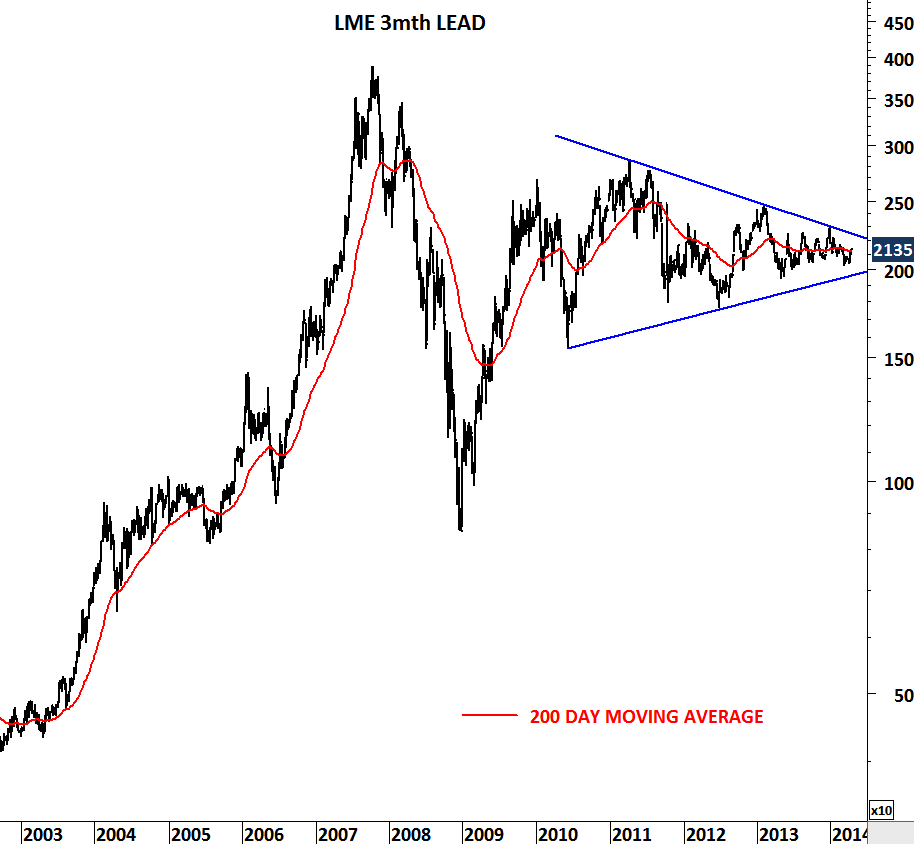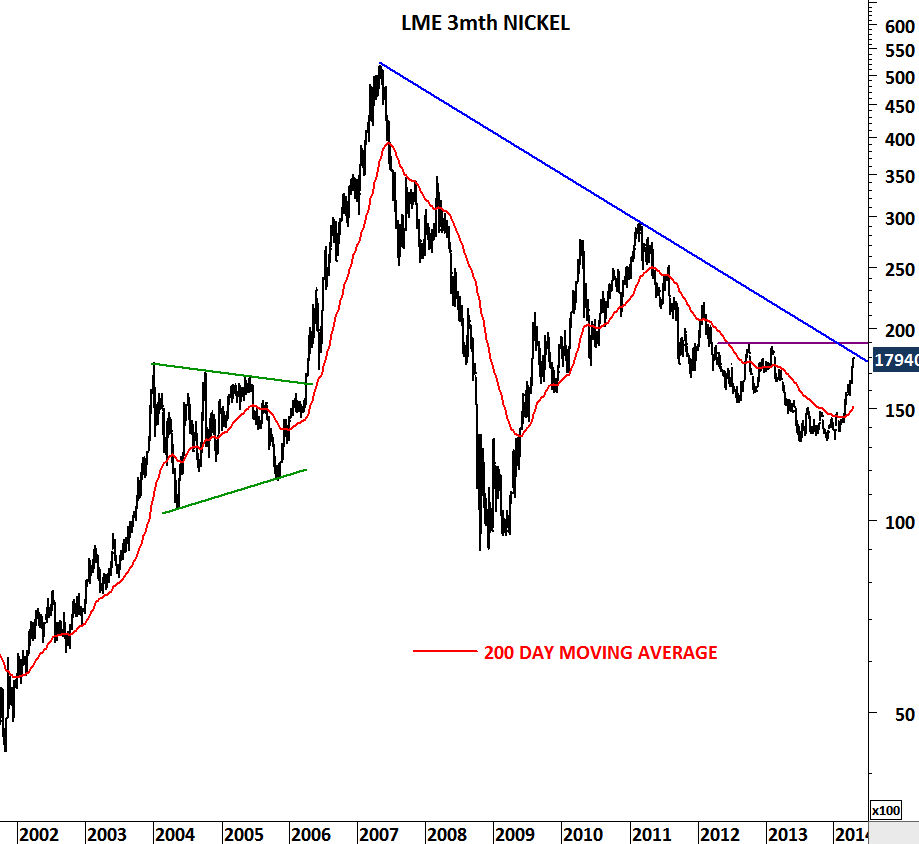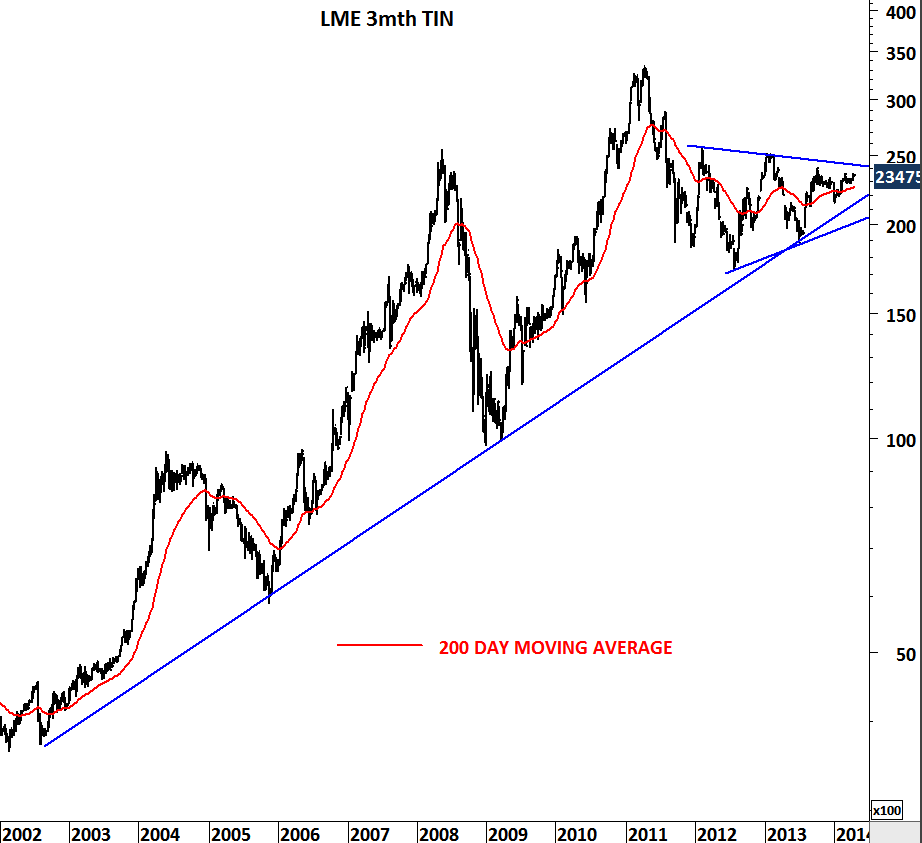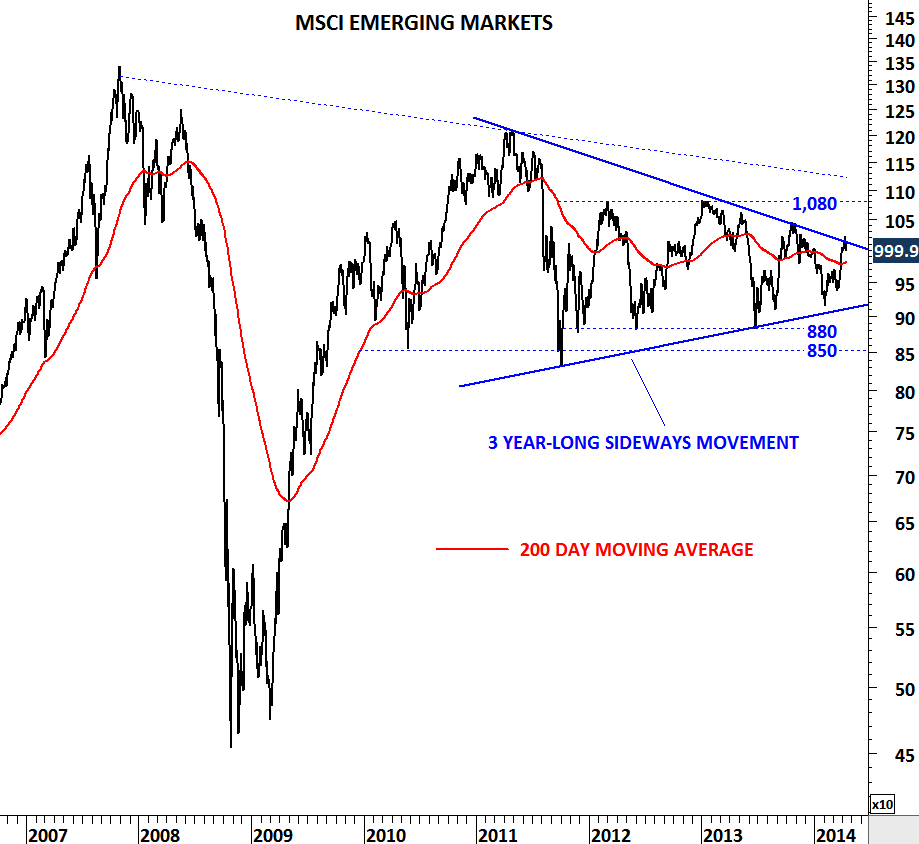ZINC
Symmetrical triangle is a reliable chart pattern. It usually forms as continuation pattern but after long down/up trend it can also reverse the prolonged trend. Converging trend lines indicate the balance of power between the buyers and sellers. Best way to trade symmetrical triangles is to wait for a decisive breakout from the tight consolidation range.
Industrial metals have been weak over the past five years. In December 2014 (earlier analysis), TIN prices formed a perfect symmetrical triangle and broke down major support resulting in a strong downtrend.
Since the beginning of 2010, ZINC price has been consolidating in a sideways trading range. Another perfect symmetrical triangle might be in progress. Breakout above 2,410 or below 2,000 levels can result in a strong trend period. ZINC chart provides long-term opportunity.

